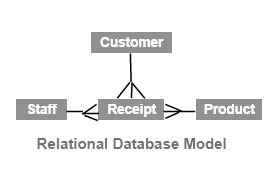
What are Data Models in DBMS?
In database management systems (DBMS), a data model is a conceptual representation of data structures, relationships, constraints, and rules used to organize, manipulate and store data. A data model provides a way to describe the structure of a database and how data is stored, retrieved, and updated.
There are different types of data models, including:
- Hierarchical Model
- Network Model
- Entity-relationship Model
- Relational Model
Hierarchical Model:
One of the earliest data models is the hierarchical one, which was created by IBM in the 1960s to handle massive amounts of data. This model uses a tree-like structure to organize data, with each record having a single parent and zero or more children.
Similar to an organizational chart, the hierarchical structure has a top-level that represents the organization’s root and lower levels that represent its various branches. Each level after the root represents a division or subcategory of the data in a database, with the root serving as the starting point.

Network Model:
The network model is a data model that is based on a graph structure, and it is a generalization of the hierarchical data model. In the network model, records are organized into a graph structure with nodes representing record types, and edges representing relationships between the record types.
Unlike the hierarchical data model, where a record can have only one parent, in the network model, a record can have multiple parents, which enables many-to-many relationships. In the network model, the parent-child relationships are represented by pointers or links.

Entity-Relationship (ER) model:
The Entity-Relationship (ER) model is a widely used data model for describing the structure of a database in terms of objects (entities) and the relationships between them. Peter Chen first introduced it in his 1976 paper “The Entity-Relationship Model – Toward a Unified View of Data”.
In an ER model, entities are represented as rectangles, while relationships are represented as diamonds. Attributes are depicted as ovals or ellipses, and they describe the properties of entities. Each entity has a set of attributes that describe it, such as student_name, student_id, etc.

Relational Model:
The relational data model is a database model that organizes data into one or more tables (or relations) of rows and columns. Each table represents an entity or concept in the real world, and the rows represent instances of that entity or concept, while the columns represent the attributes of the entity or concept.
The relational data model was first introduced by Edgar F. Codd in 1970, and it has since become the dominant database model used in commercial data processing applications. It is known for its simplicity, flexibility, and scalability.

Note: also read about DBMS Architecture
Follow Me
Please follow me to read my latest post on programming and technology if you like my post.
https://www.instagram.com/coderz.py/
https://www.facebook.com/coderz.py
Staying up to the mark is what defines me. Hi all! I’m Rabecca Fatima a keen learner, great enthusiast, ready to take new challenges as stepping stones towards flying colors.
Leave a Comment
You must be logged in to post a comment.